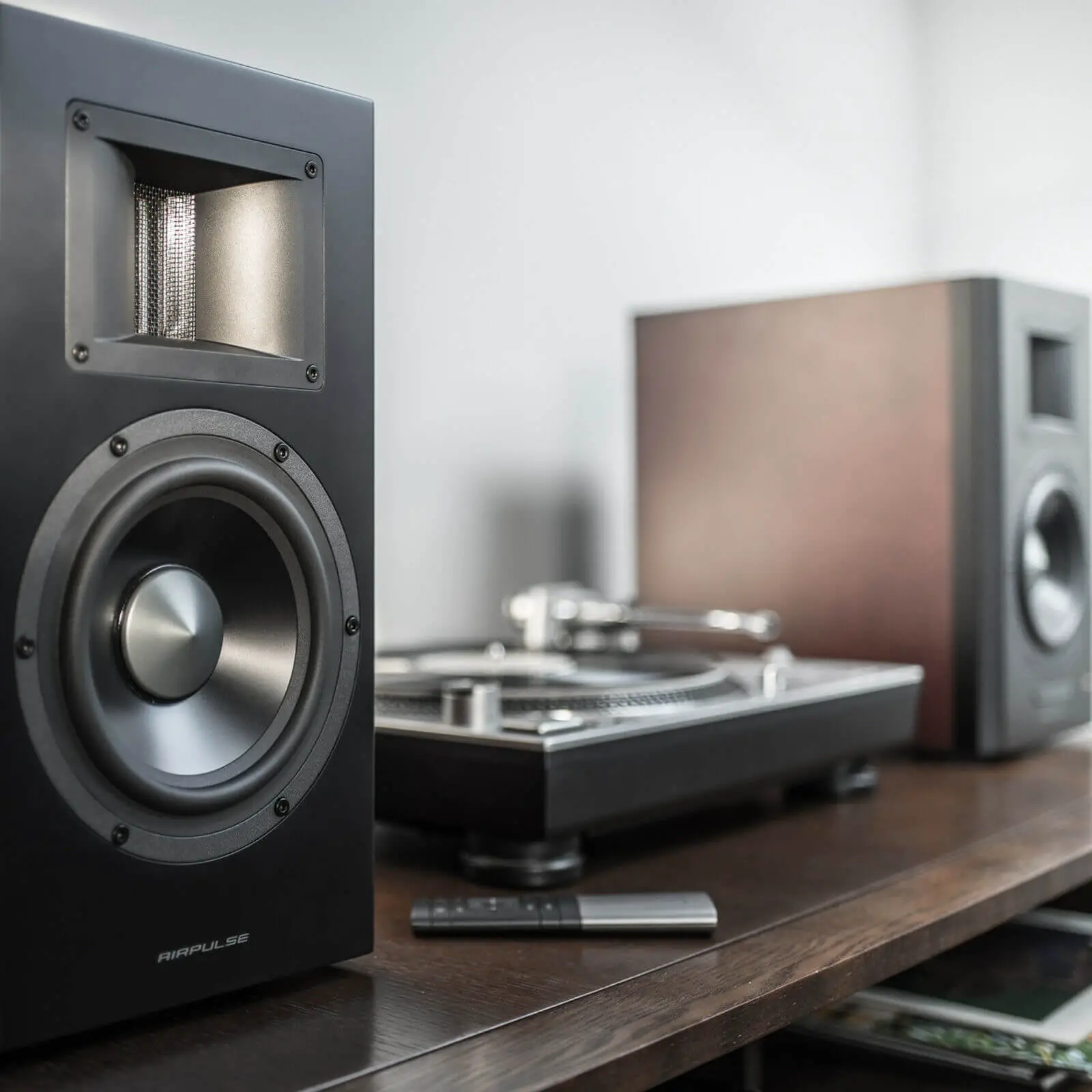Edifier Airpulse A300 Review
At the end of 2016, Edifier and AIRPULSE released the A200 active speaker. It is based on Edifier’s digital crossover and digital power amplifier platform. At the same time, Edifier uses the 7001 speaker well-known design by the designer Phil Jones ten years ago as a model, using an aluminum ribbon horn tweeter, a newly developed cast aluminum frame, and aluminum diaphragm bass. A200 is the first AIRPULSE brand design by Edifier since the collaboration between Edifier and Phil Jones. It is very cost-effective, with excellent digital crossover and driver design. The high-level ribbon tweeter performance reflects the highest sound quality on the audio system at this price. Of course, AIRPULSE A200 is not the end, and now A300 is here.
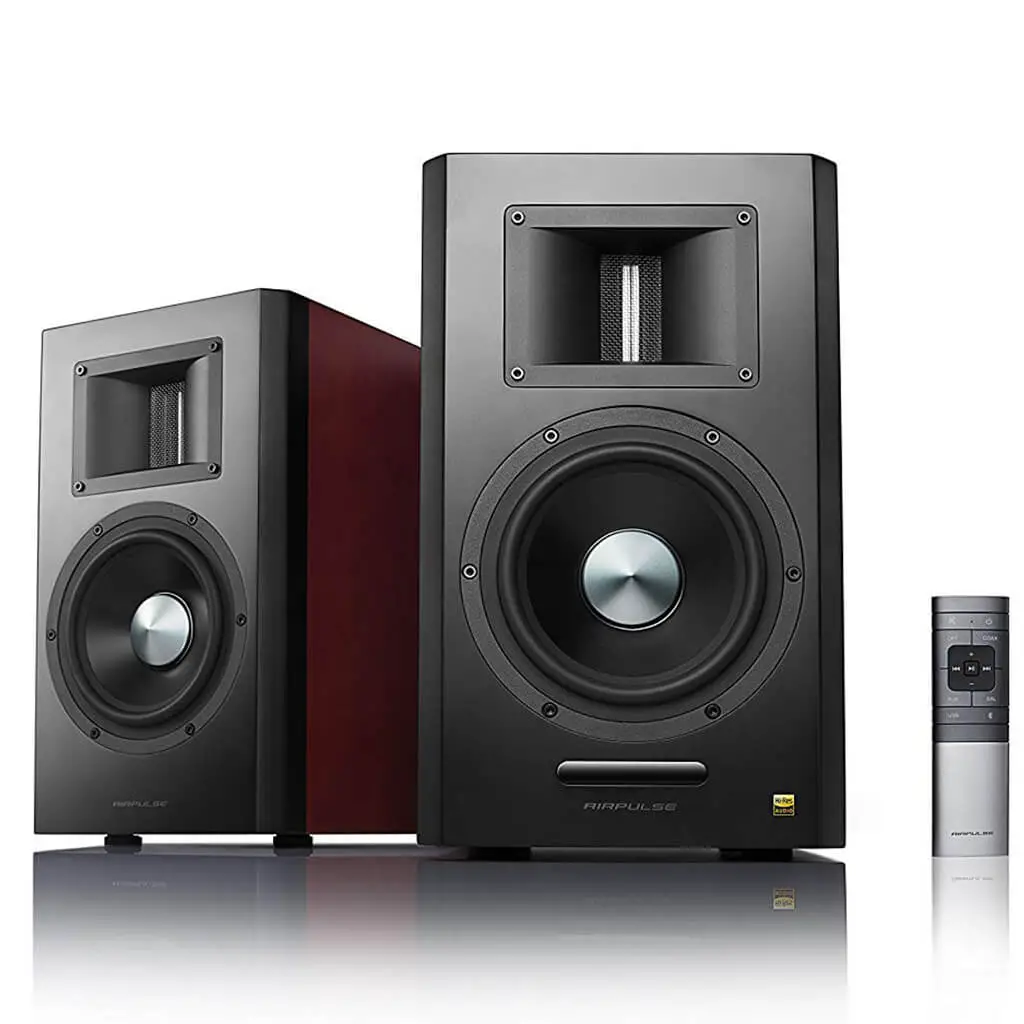
Simply put, AIRPULSE A300 is a higher-end version of A200. Digital crossover, digital power amplifier, and driver core technology have not changed, and some adjustments have been made in functions and details. It seems that the most significant change is the larger size of the A300. Because the size of its mid-woofer speaker has increased compared to the A200, reaching a diameter of 6.5 inches. The A200 is 5.5 inches.
Appearance and Function
Appearance and Configuration
The appearance design of AIRPULSE A300 speakers is very similar to A200. The cabinet size [WxHxD] of A300 is 225 x 385 x 340mm, while the cabinet size of A200 is 203×355×295mm. The weight of A300 is 24kg, and the weight of A200 is 19kg.
The A300 is still the main and auxiliary speaker design. Perhaps the digital power amplifier and digital crossover architecture prevent the A300 from becoming a dual mono design.
AIRPULSE A300 is more focused on accessories than previous Edifier speakers. The first is the remote control. That is the first time Edifier has completely redesigned the remote control in nearly seven or eight years. The new design of the remote control ensures that each button can realize the switching of various inputs. The appearance design style is also more consistent with such speakers. Unfortunately, this remote control is made of plastic, and the surface texture to the touch is quite ordinary.
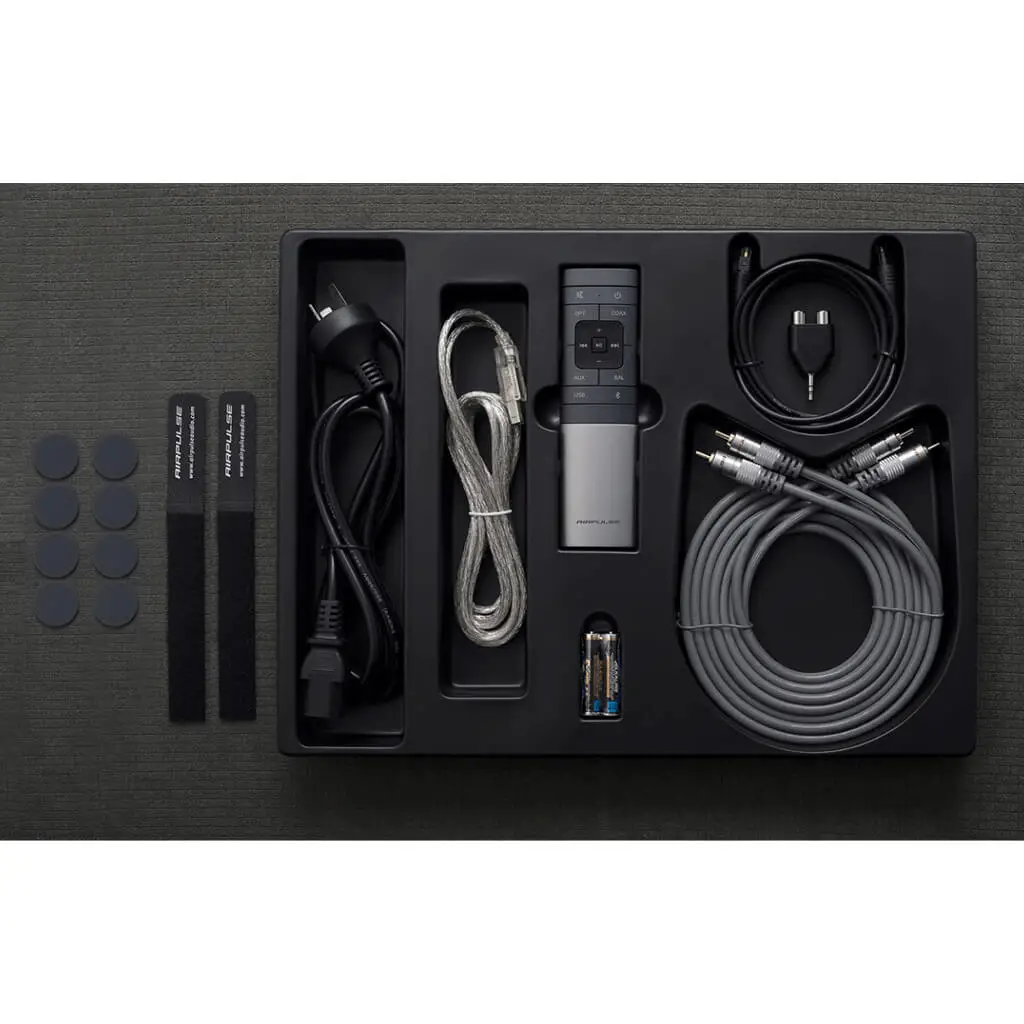
The accessories also provide an RCA cable that looks much more beautiful than before. Besides, the connection line between the two speakers is still the same as the A200. The length is 5 meters, which is convenient for placing in larger rooms.
For the launch of A300, AIRPULSE, like the A200, introduced a specially designed ST300 speaker stand. That is very good for stand artistry, stable and solid.
Review and changes of the leading technologies
Design and Driver
The Airpulse A300 cabinet and driver’s design is the same as the previous A200, except that the mid-bass driver is changed to 6.5 inches. The 6.5-inch bookshelf speaker is designed to be about 23L in size, which is also a conventional design.
The tweeter of the A300 is the same as the tweeter of the A200. It is a horn-type aluminum tape tweeter. This driver is designed based on the aluminum ribbon tweeter used by Phil Jones’ 7001 as a reference. On the A200, this tweeter has shown outstanding mid-to-high frequency linking capabilities and excellent resolution. The aluminum ribbon tweeter is generated by the vibration of a thin and narrow aluminum foil placed in a magnetic field. Because it is much shorter than a traditional voice coil, it requires high magnetic flux density materials and relatively high cost. Simultaneously, due to the high sensitivity of the aluminum strip itself, a transformer is needed behind the driver to reduce the voltage.
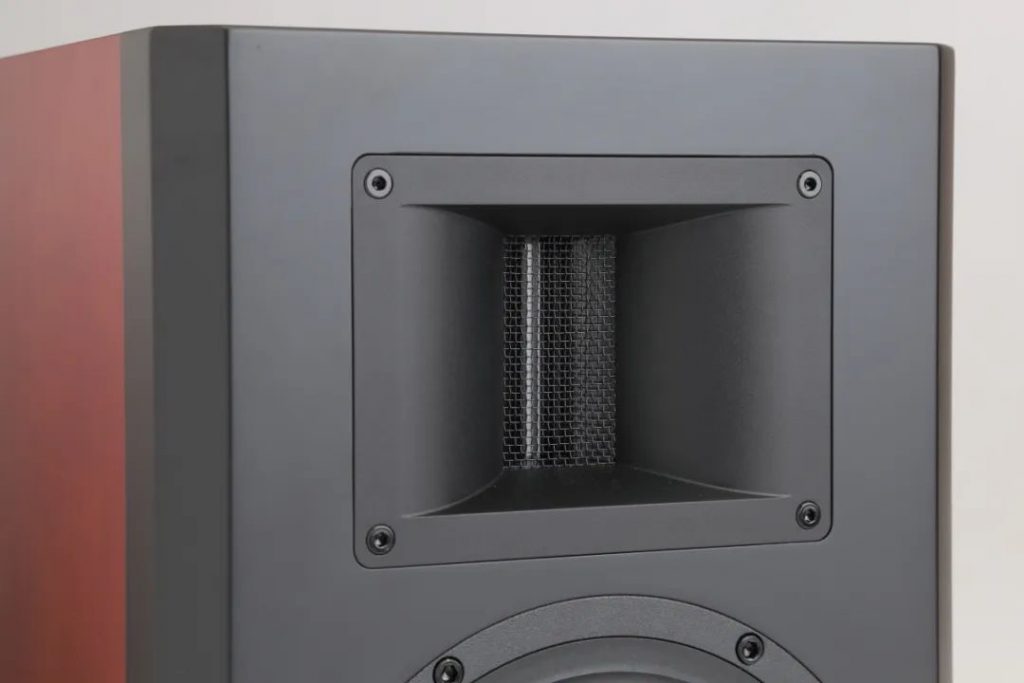
For the woofer, the overall design of the 6.5-inch driver on the A300 is the same as the 5.5-inch driver on the A200. The woofer uses an aluminum frame and diaphragm. The aluminum frame ensures the stability of the system and is only used in high-end speakers. And more cost comes from the speaker’s magnetic circuit and internal structure design. It uses a small voice coil long-stroke design. The short voice coil ensures that the voice coil is in the magnetic field throughout the stroke range. That ensures that it is still within the uniform magnetic field when it reaches the edge of the magnetic field and has lower distortion. The short voice coil and long-stroke design ensure lower distortion of the mid-woofer, and at the same time has a relatively better frequency response due to the reduced weight of the driver. Like the problem with the tweeter, the short voice coil requires a powerful magnetic field, so the magnet’s cost is significantly increased.
Digital crossover and digital power amplifierEdifier’s digital crossover and digital power amplifier platform, its core is not only a digital power amplifier, but the key is the integrated design of digital crossover and speakers, and the fine-tuning of the entire speaker by DSP. Edifiers have always called this technology an electronic crossover system. That is still the case on AIRPULSE A300.
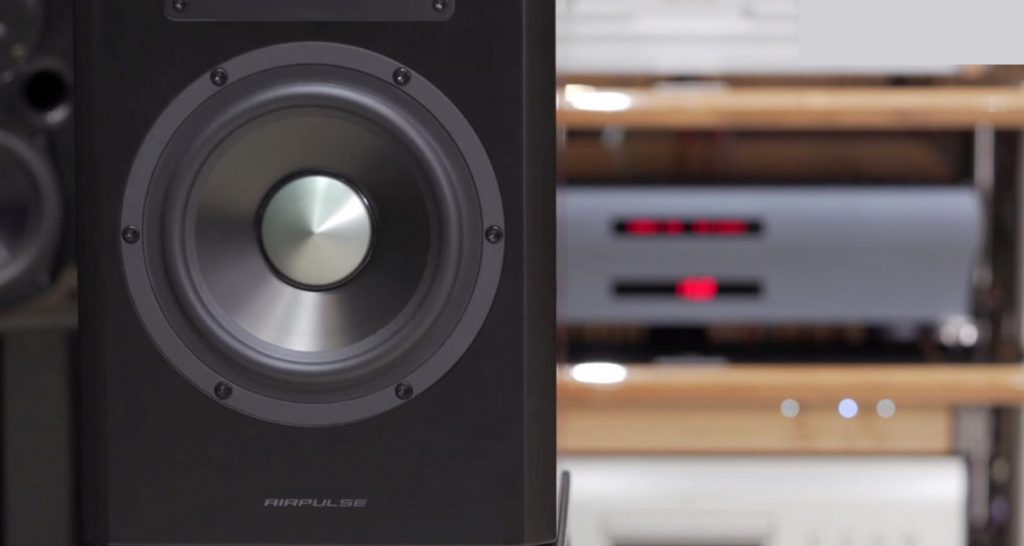
The digital structure of the Edifier is what audiophile calls “bi-amp.” The treble and bass of the audio signal are divided first, and then the two drivers are driven individually by two separate amplifier channels. We know that many passive speakers have two sets of binding posts behind them to prepare for bi-amp. And Edifier digital crossover and digital power amplifiers do just that.
Edifier also introduced XMOS chips on this digital platform. XMOS’ xCore has become one of the absolute mainstream solutions in the USB Audio part. The functions realized by the introduction of this chip by Edifier are not only for the USB connection with computers and external devices but also for digital frequency division. It is used to replace TI’s TLV320AIC3254 DSP chip that has been used before. Of course, the XMOS chip also allows AIRPULSE A300 to connect to the UAC2 operating system. From the actual use point of view, Edifier under Windows provides the driver for the official XMOS driver. Driver-free support is available under macOS.
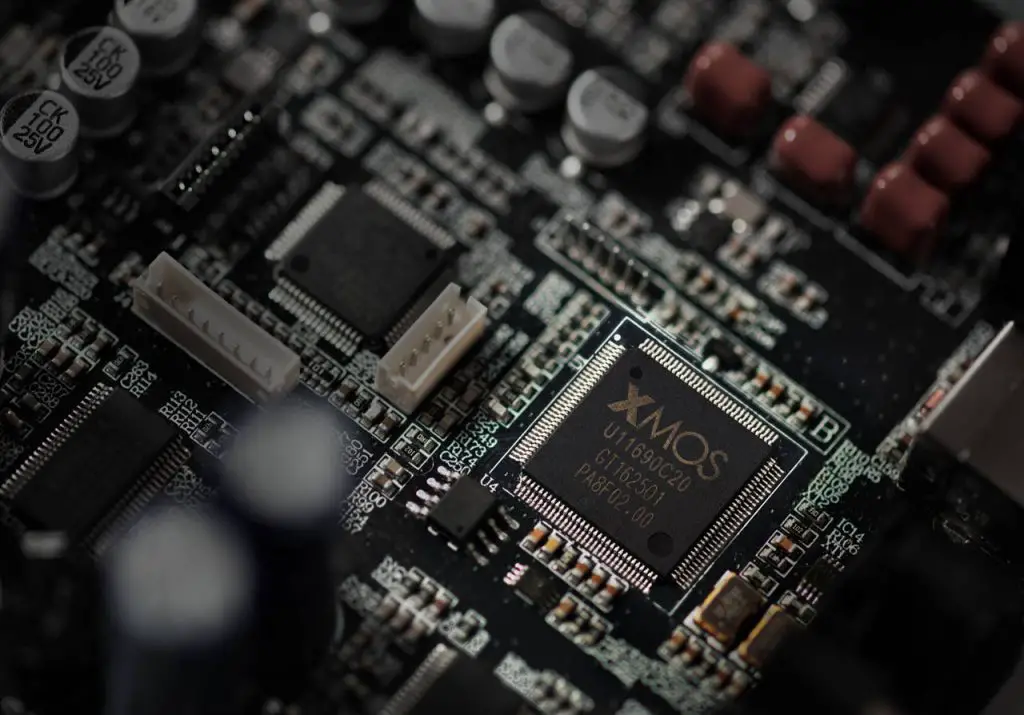
USB input and S/Pdif digital input can support the 192kHz sampling rate, but 2x and 4x at 44.1kHz are not supported.
On the digital power amplifier chip, the A300 uses the old solution, that is, three TI TAS5754M Class D amplifier chips. One for the tweeter, two for the woofer individually. The power of the two tweeters is 10 watts, and one TAS5754M is more than enough. The power of the mid-bass of the A200 is 55 watts, and the power of the A300 is 70 watts. Theoretically, A300 is close to the limit of using this chip.
ADC and digital input
This time we saw three ADC chips in the A300 machine, namely PCM1802, PCM4202, and PCM9211. PCM4202 first appeared on the Edifier platform. PCM4202 is a relatively new TI ADC chip with outstanding performance. This time AIRPULSE A300 uses PCM4202 to do the ADC work of the XLR balanced input interface. This chip supports analog differential signal input. Before PCM4202, there was also an OPA2134 op-amp as the front stage, which should be to ensure that the input signal is dynamic enough. On the A200, PCM1804 is used as the ADC for balanced signal input.
PCM1802 is used for ADC conversion when RCA is an analog input. The PCM9211 ADC and digital signal receiving chip works as a pure digital signal receiving chip and is responsible for coaxial and optical S/Pdif signal input.

On the whole, AIRPULSE A300 increases the size of the mid-woofer unit and increases the maximum output power of the digital power amplifier chip. At the same time, it uses XMOS chips for digital crossover and USB audio input. In the ADC part, a set of modules with pre-amplifier circuits are specially designed to serve the XLR input. These aspects are different from the past. Finally, don’t forget that the A300 still supports Bluetooth input. The chip is a new Bluetooth 8645 product from Qualcomm CSR, which supports apt-X encoding.
USB input/Bluetooth inputJudging from the normal USB mode, the USB input of the A300 is equivalent to a digital sound card with a medium to the upper level. In terms of mid-frequency and low-frequency dynamics and volume, it is weaker than the excellent USB decoder analog input. But in terms of high-frequency resolution and level, the performance is excellent.
For Bluetooth input, don’t underestimate the Bluetooth’s encoding performance; it can also distinguish the quality of the audio source itself. If conditions permit, you can try to play music files that are 24bit/96kHz in apt-X. You can feel the advantages over 16bit/44.1kHz, and the benefits of apt-X are more obvious at this time.
Sound Performance
Overall impression
AIRPULSE A300’s 6.5-inch bass woofer will bring the effect. I believe music enthusiasts will have certain expectations. Better low frequency is the least suspenseful. But how good is it? Only after hearing it and comparing it will I know. A larger mid-bass unit can bring a more relaxed listening experience. But the larger mid-bass driver also makes it relatively difficult to connect with the tweeter in the mid-to-high range.
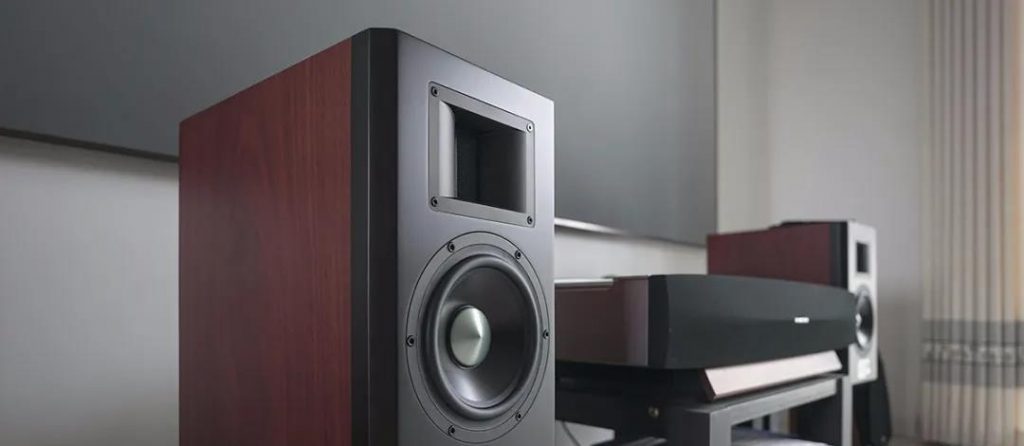
As we expected, the low-frequency dive of the A300 is much better than that of the A200. In an ideal listening environment, the depth of the low frequency still shows the strength of a larger speaker. In terms of midrange style, the Edifier Airpulse A300 has also been slightly adjusted, and the sound has become softer and more relaxed. It maintains a relatively reliable, neutral style, and does not make the mid-range significantly heavy due to the addition of large-size speaker units. The high-frequency performance is slightly different under different inputs, but it maintains the same high level as A200.
High-frequency performance
The high frequency of the A300 is the same as that of the A200, with light transient and excellent resolution.
In the A200 evaluation, we talked about the potential of this aluminum ribbon tweeter in terms of resolution. For high resolution, a very high-frequency extension is better. When using digital input or USB input, it can also show relatively better resolution in the high-frequency part.
Mid-Performance performanceWith increasing in the size of the bass driver in the A300, a more relaxed and soft listening feeling is achieved.
Edifier digital power amplifier and digital crossover platform started from the appearance of the most entry-level R1600. The performance of the mid-frequency and the connection between the high and low units have been excellent. On the A200, we think that it has reached a unique state of the art. When evaluating A200, we compared S2000MKII, but even Phil Jones’ AIRPULSE Silver Reference 1.
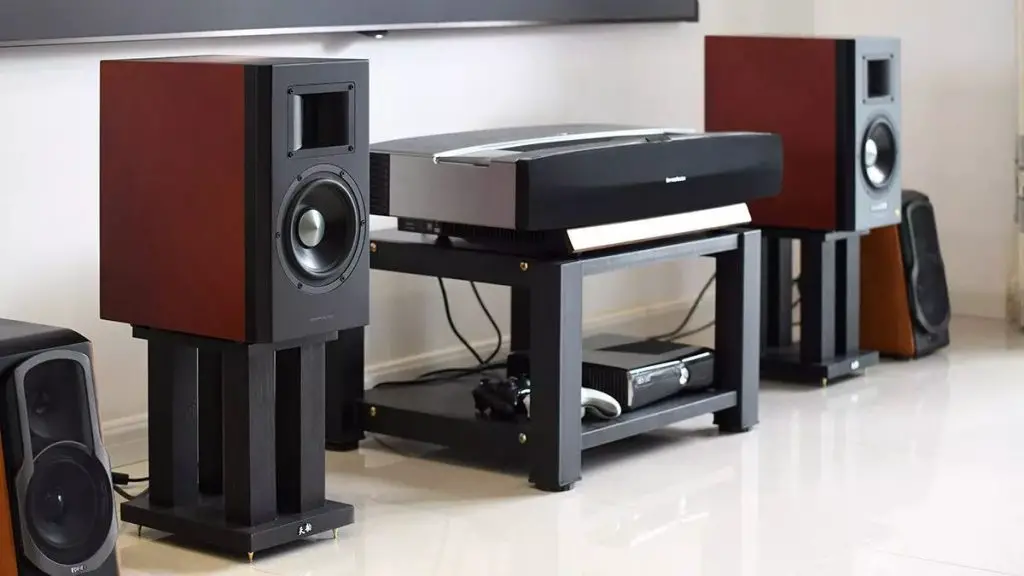
The voice of the A300 turns out to be a sweeter female voice. In listening to instrumental music, classical music, large-scale symphony, etc., because of the apparent advantage in low frequency, the overall performance is relatively relaxed. For sizeable dynamic control and hearing, more comfortable and mid-low frequencies make the sound more relaxed and free, while the sound of A200 is slightly tighter under significant dynamics.
Low-frequency performance
AIRPULSE A300’s low-frequency victory over A200 has no suspense, and it is also significantly better in terms of low-frequency diving depth. In the more exaggerated low-frequency dive performance, it is far better than the A200. The mid- and low-frequency sound is also more relaxed and delicate, not only can show better resolution but also more calmly to deal with significant dynamics. In terms of resolution and level of low-frequency percussion, the A300 is more delicate, calm, and clean. If you have audio requirements for playing games and watching movies, the low-frequency performance of the A300 is fantastic and meets your needs.
Edifier AirPulse A300 vs AirPulse A100
Conclusion
Judging from the performance of the existing EdifIer Airpulse A300, like many 6.5-inch mid-bass speakers, the appearance of a larger mid-bass unit is more beneficial to the sound contribution. The significantly better low-frequency dive has been dramatically increased, and the dynamics and levels have been improved.
Edifier Airpulse A300 Specs
- TWEETER UNIT: Horn Loaded Ribbon Tweeter
- MID-WOOFER: 6.5inch Aluminum Cone Underhung Design Neo. Power Mid-Woofer
- AMPLIFIER SYSTEM: Digtal Amplifer With Xmos Processor
- TOTAL POWER OUTPUT: L/R(Treble):10W+10W, L/R(Woofer): 70W+70W
- FREQUENCY RANGE: 40Hz-40KHz
- SIGNAL-TO-NOISE RATIO: L/R:≥90dB(A)
- INPUT TYPE” AUX, Balance Input, USB, Optical, Coaxial, Bluetooth.
- INPUT SENSITIVITY: AUX:700±50mV Balance:1150±50mV, USB:550±50mFFs, Optical:500±50mFFs Coaxial:500±50mFFs
- MAINS VOLTAGE: 100-240 V AC/50-60 Hz
- CABINET SIZE: 225 x 385 x 340mm
- NET WEIGHT: 24kg (53lbs)
